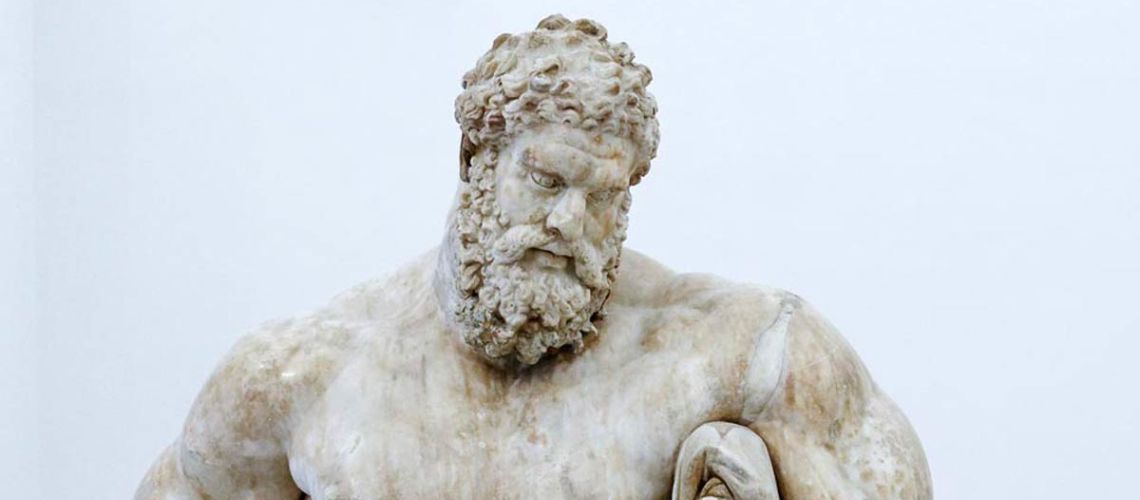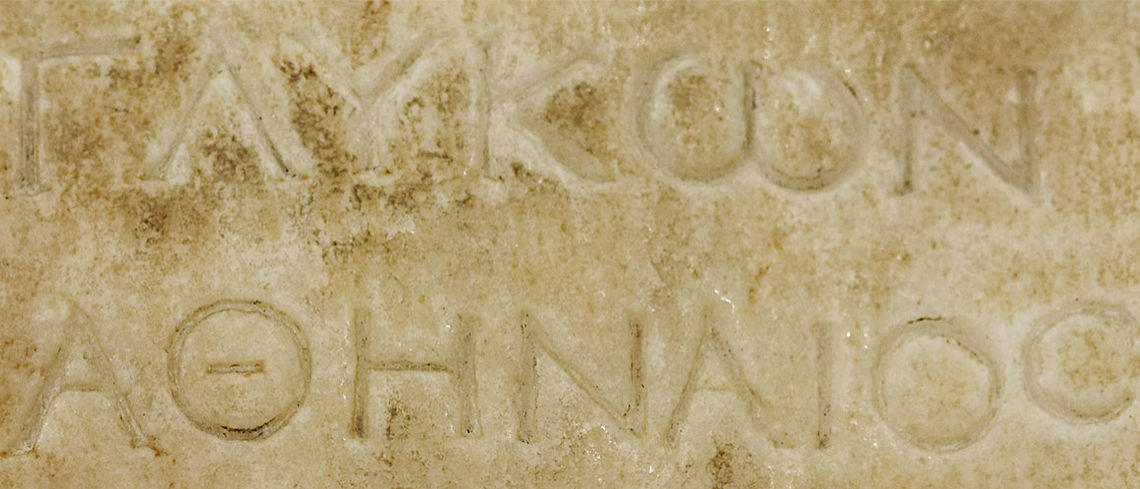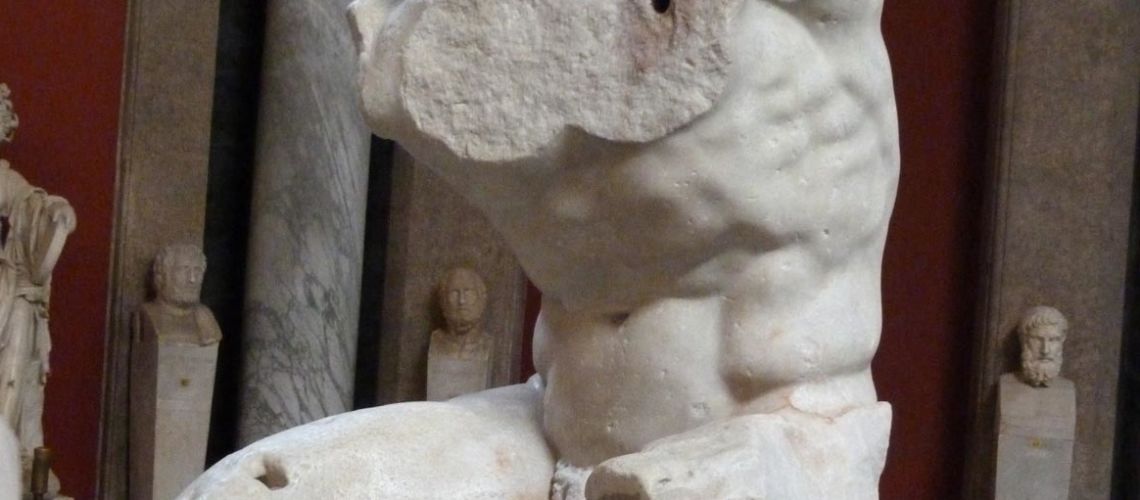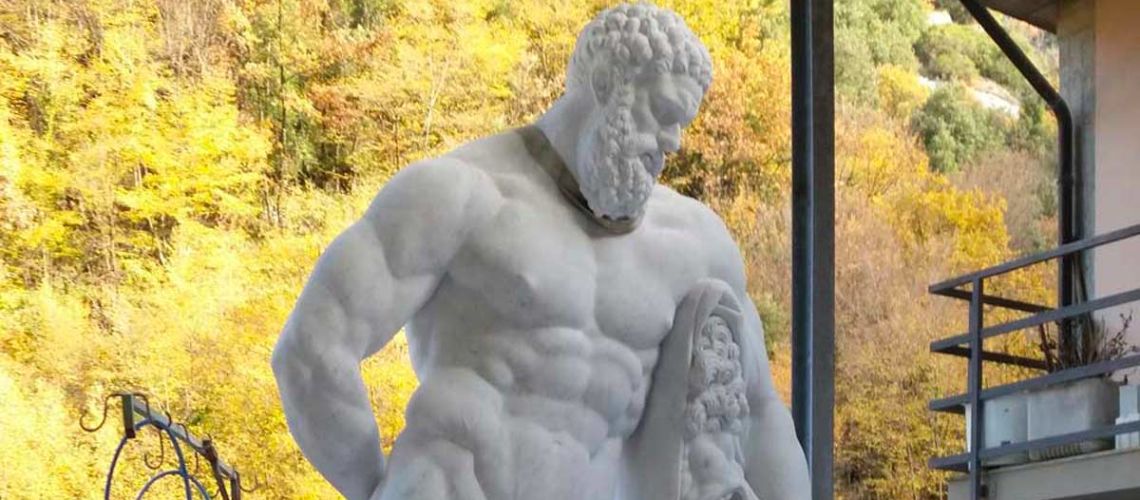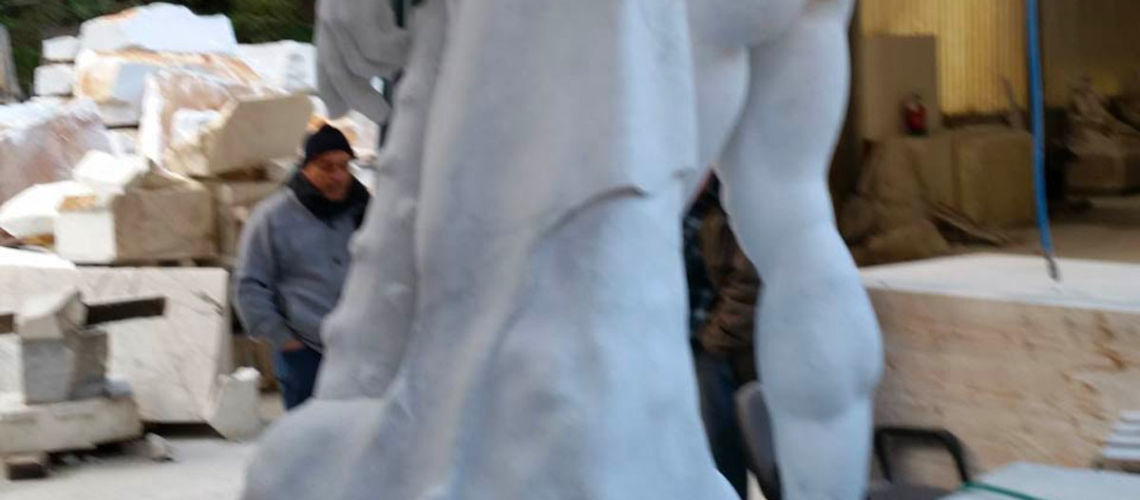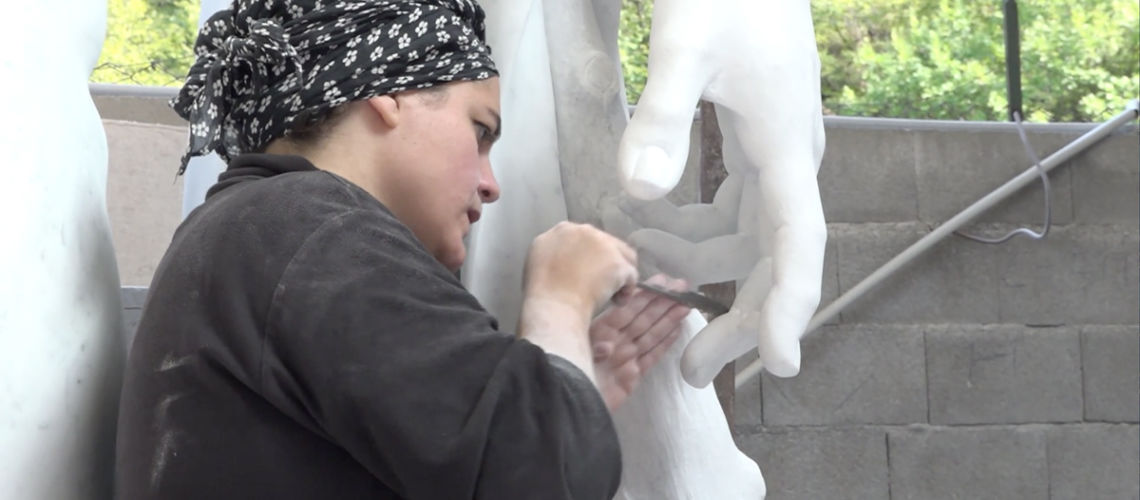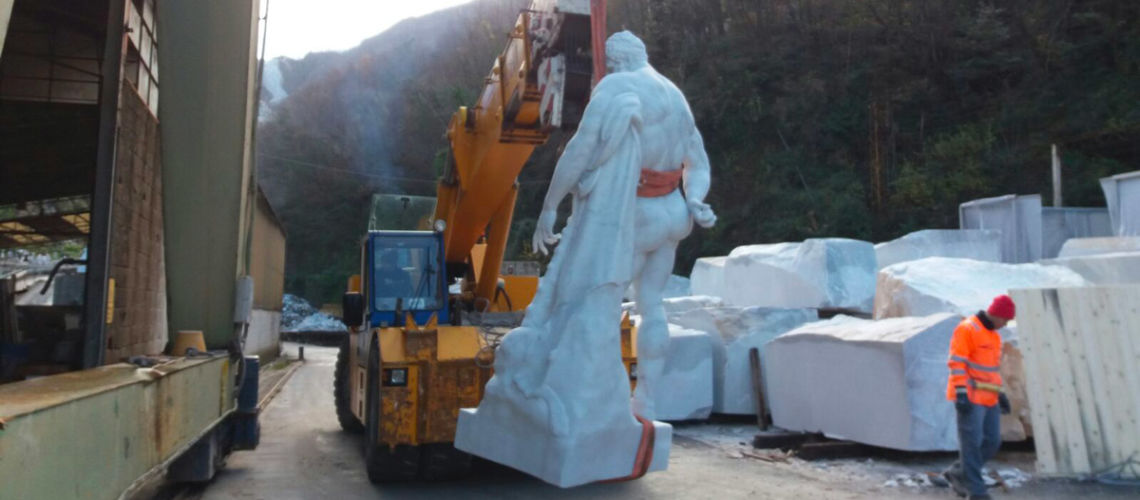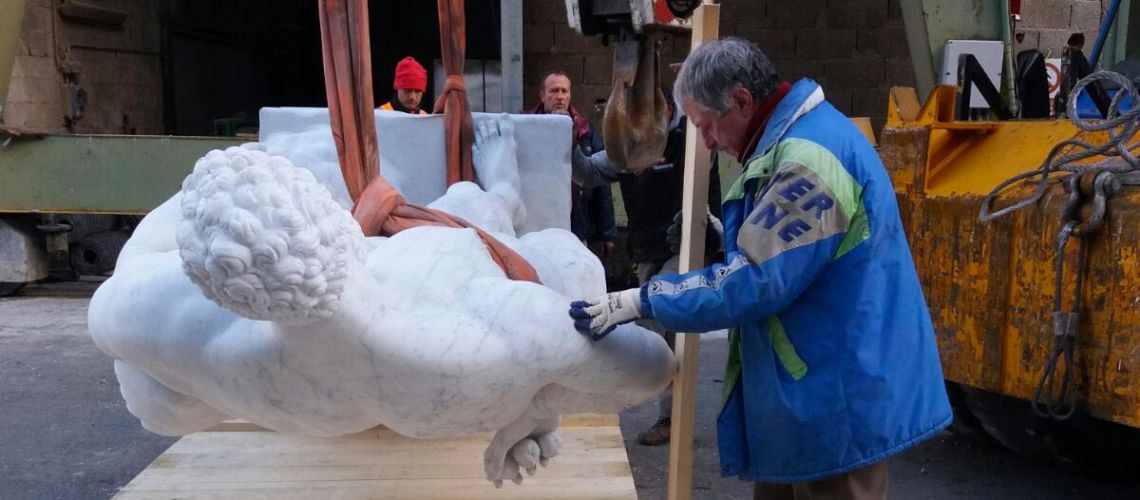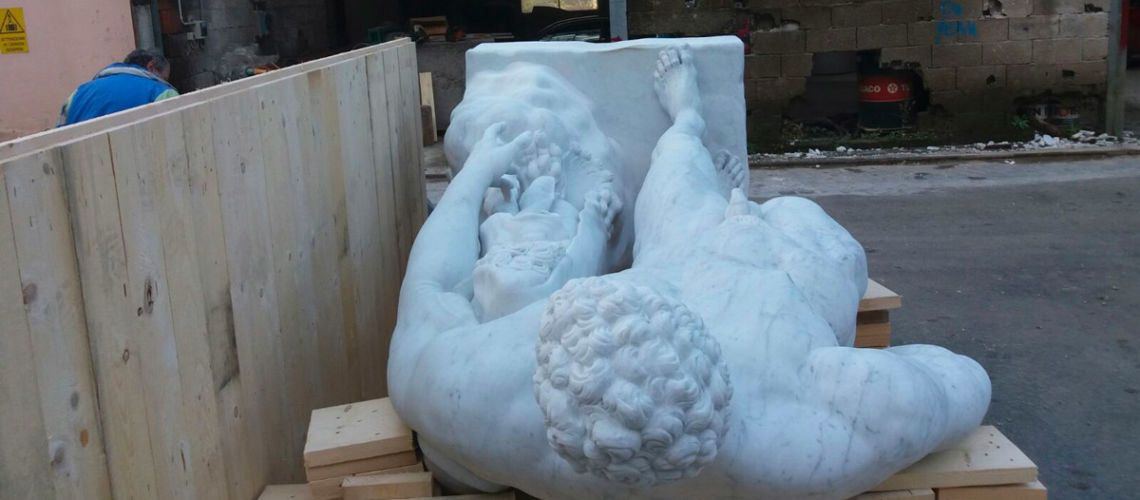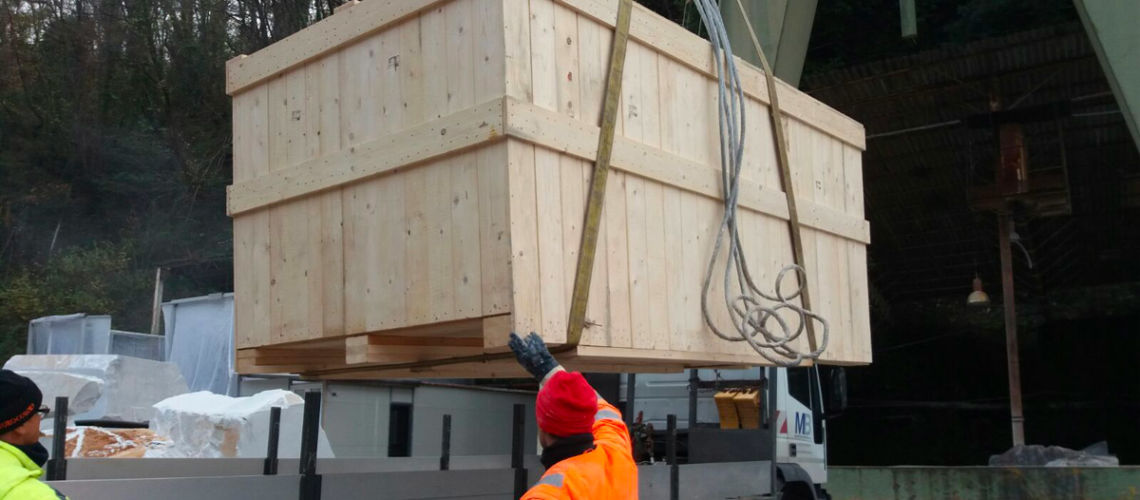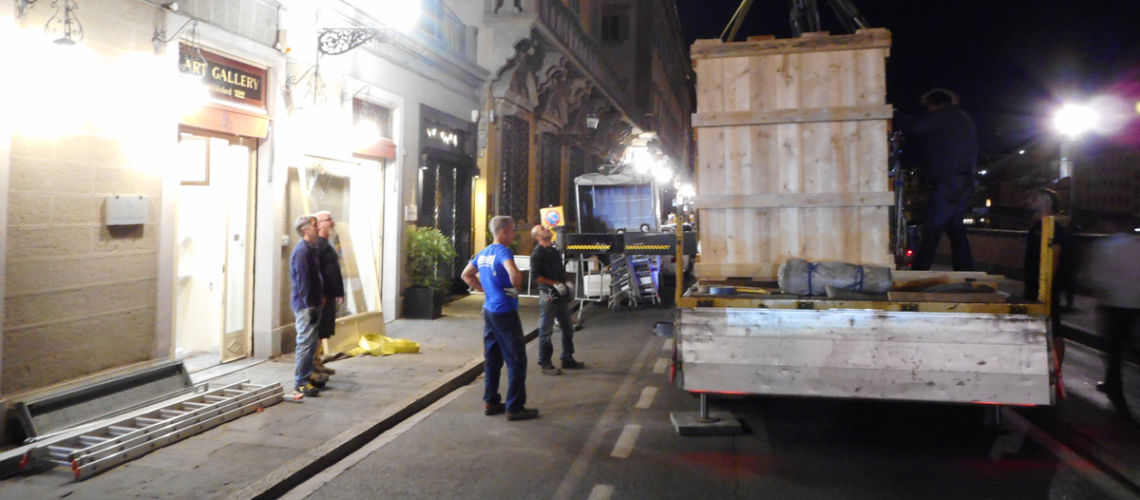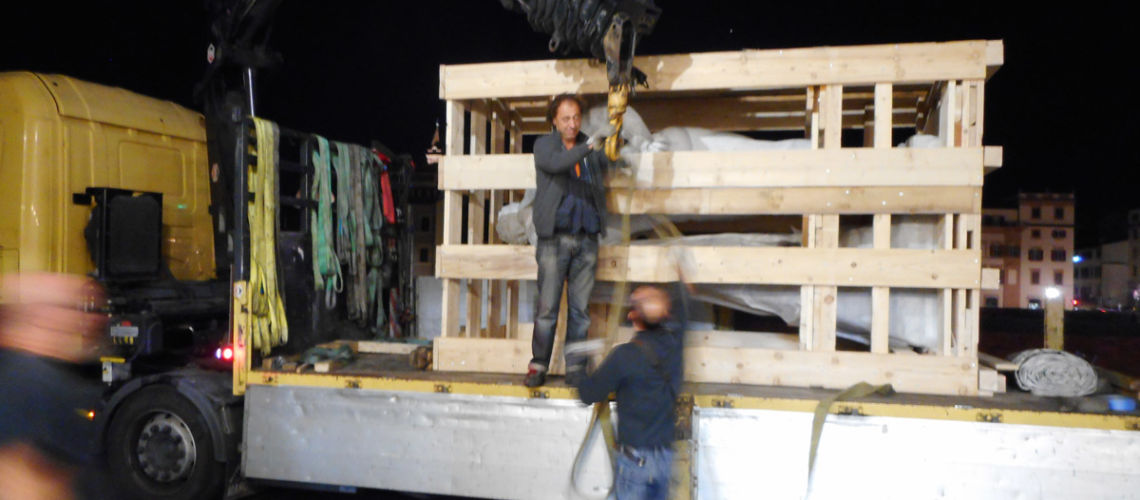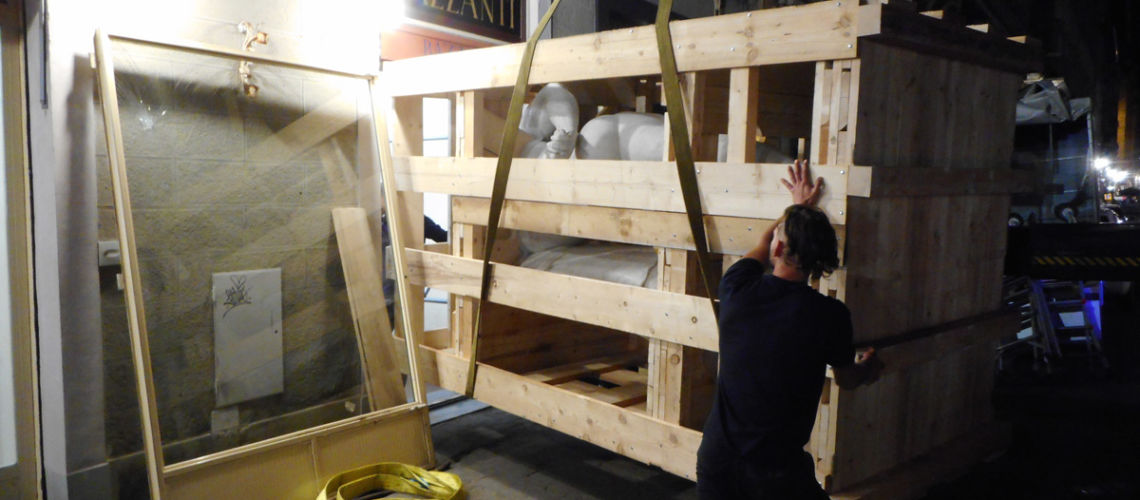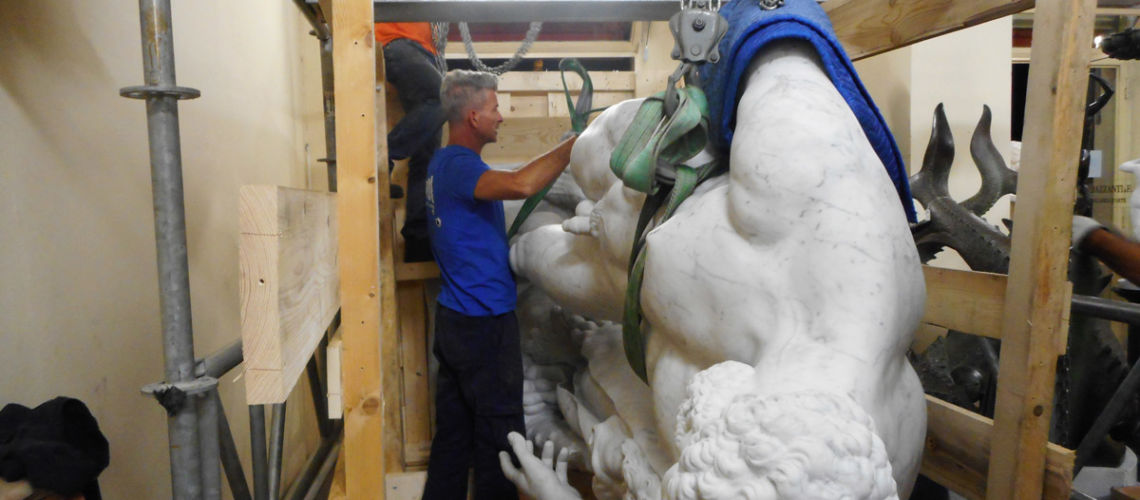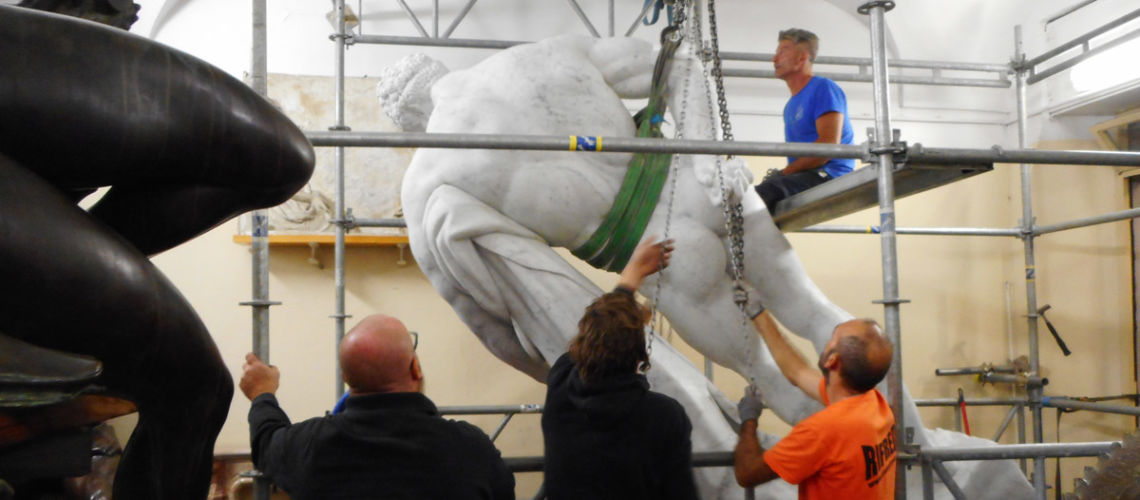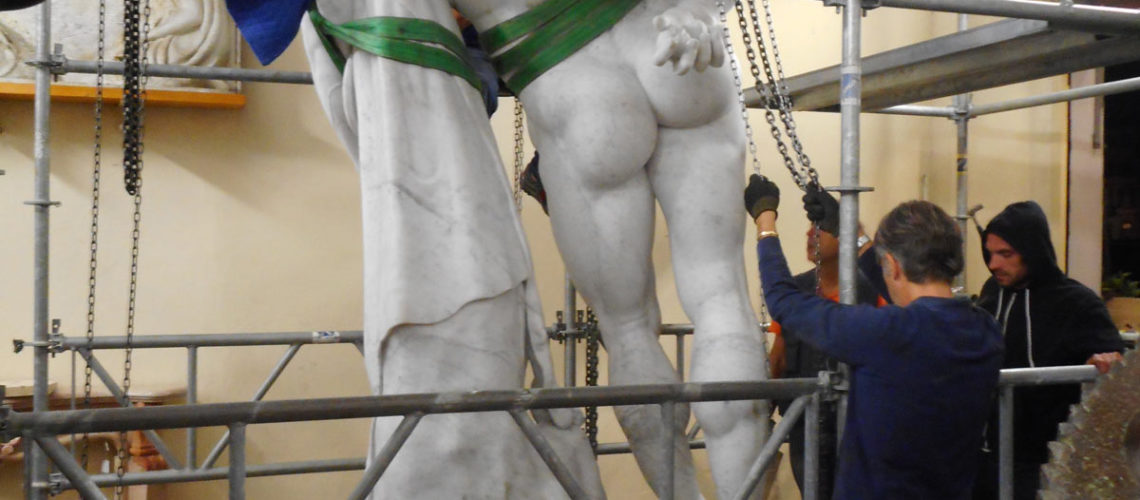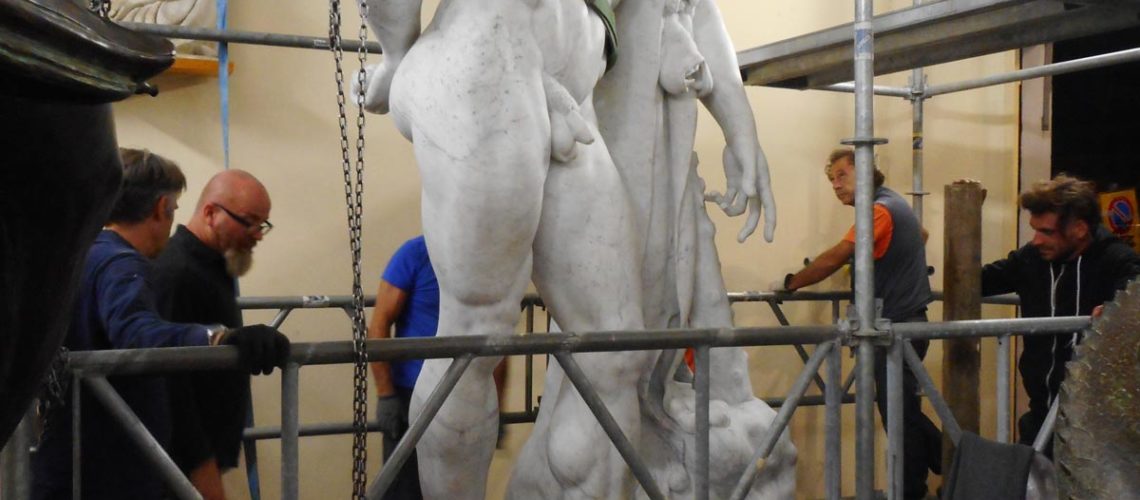Another marble colossus: the replica of the Farnese Hercules
Another exciting adventure has been to sculpt in marble the colossal Farnese Hercules of the Naples Museum, a Greek statue of the III century AD., 3,17 meters high.
It is one of the few ancient sculptures signed by the author: Glicone di Atene, as can be seen engraved on the base of the club.
Even in ancient Greece, and not only in Rome, replicas were also loved, even in different sizes from the original ones: in fact, this marble is the enlarged replica of the original bronze made in the 4th century BC. by the famous Lisippo, lost.
Hercules, symbol of superhuman strength, and in fact was a demigod, is represented with a powerful exaggerated anatomy. His attributes are the skin of the Nemean lion, sent by Hera (Juno) to kill Hercules. His skin was unassailable by spears and arrows, but Hercules stunned him with his club (on which he rests in the sculpture) and then strangled him. He used his skin to make himself a kind of garment that made him invulnerable that, in the sculpture, dangled on the club. These accessories were used by the sculptor to create a huge side support to which the Hero leans: it would have been impossible to support his body mass, moreover inclined, only on the two ankles.
The Renaissance restorations
The colossus was dug in the Baths of Caracalla in Rome in the mid-1500s, without the left forearm and legs. The philosophy of restoration during the Renaissance was generally that of recreating the missing parts of the ancient works, so as to reassemble their presumed integrity. It was very difficult for those who had a more “scientific” mentality to persuade the owners of the archaeological works to leave them as they were found, without integration. Consider for example the twins Romulus and Remus added in the Renaissance to the Capitoline Lupa probably by Antonio del Pollaiolo.
Perhaps only Michelangelo succeeded with the marble Belvedere Torso of the I century a. C. (by the Greek sculptor Apollonio), found mutilated in Rome in the 15th century.
It seems that when Pope Julius II turned to Michelangelo to rediscover the missing parts, the latter refused, declaring that the sculpture was so magnificent and it should not be absolutely touched. On the other hand, his pupil Guglielmo della Porta did not had many problems in re-sculpt the missing legs of Farnese Hercules, satisfying the commissioner Pope Paolo III Alessandro Farnese so much that, even when the original legs were dug, he decided to leave those of Della Porta, judging them better than the original ones.
The marble replica
The marble sculpture was performed in the Studio Bazzanti with the technics called “in points” thanks to the model taken from the original by the Fonderia Artistica Ferdinando Marinelli.
The difficult transportation
The five tons colossus was crated at the Sculpture Studio.
The next phase was almost as complex as having carved the Hercules! In fact, it was a matter of letting the colossus into the Galleria Bazzanti of Florence horizontally and then standing it in the right place. Having had the Lungarno closed to traffic, the operation took place at night.

